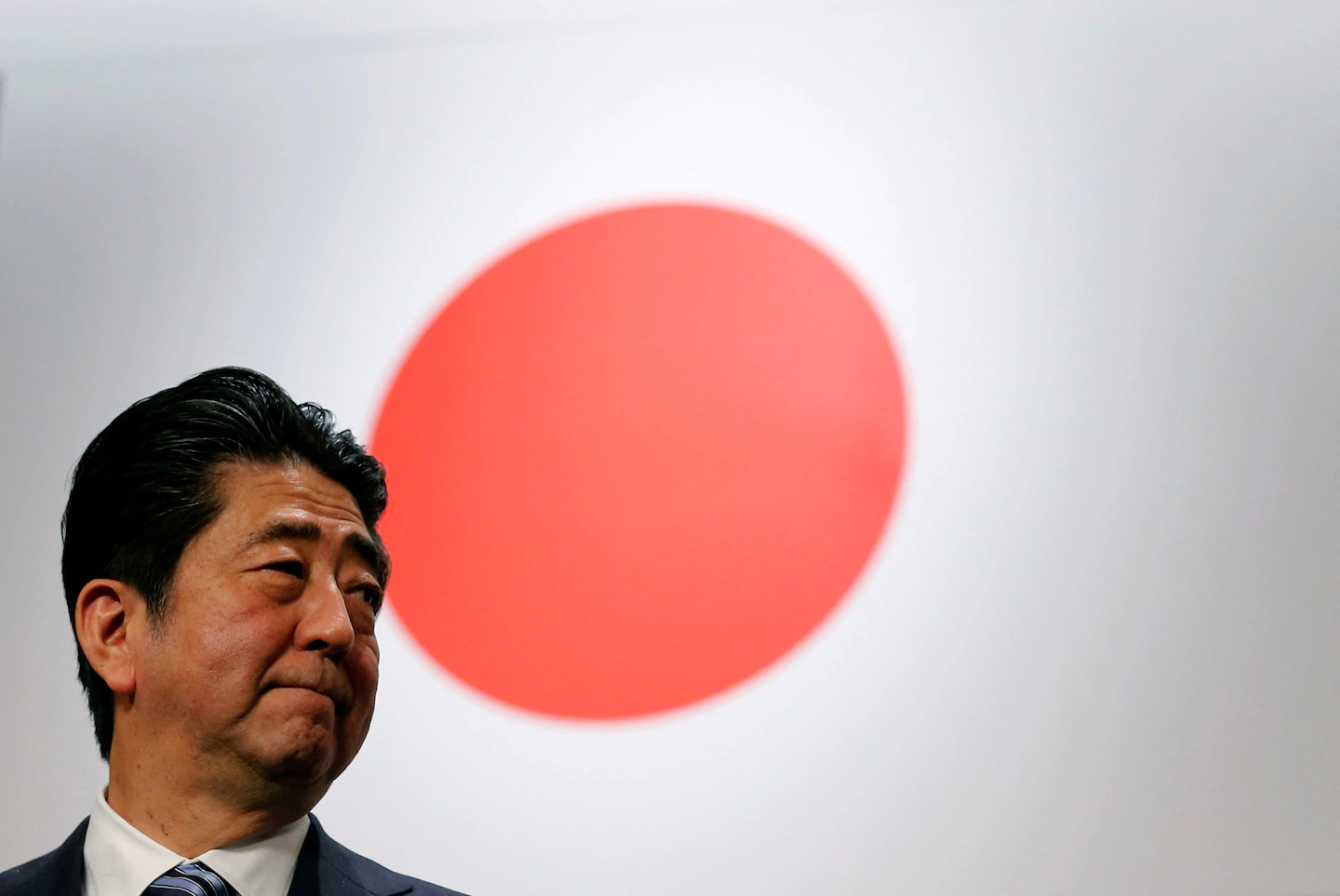By the time he resigned because of illness in August 2020, Abe had become modern Japan’s longest-serving prime minister. His tenure exceeded that of his grandfather Nobusuke Kishi, who led Japan from 1957 to 1960; his father, Shintaro Abe, also served as chief cabinet secretary, often seen as the country’s second-most powerful position.
Abe sought to transform a nation protected by the American nuclear umbrella and bound by a pacifist constitution into a more assertive and internationally engaged power. He also attempted to revitalize the stagnant Japanese economy, which lost its position as Asia’s largest between his two stints in office.
Scandal marred his brief first term as prime minister. But he found more success redirecting the nation’s course after returning to power in 2012. The economic policies he pursued, dubbed “Abenomics,” were intended as shock therapy for an economy that had become stagnant after a lengthy postwar boom. Abe’s “three arrow” strategy called for a combination of monetary easing — which he convinced the Bank of Japan to support — increased government spending and other economic changes aimed at ending more than two decades of lost growth.
Debate over whether the strategy worked is not settled, though few structural changes were enacted and the cycle of hyper-low inflation was not broken.
Abe built off Japan’s long-standing security alliance with the United States. Wary of an assertive China, he also developed close ties between Japan, Asia’s richest democracy, and India, the region’s most populous. Abe was a strong proponent of the Quad, an informal gathering of Japan, India, Australia and the United States that is a counterweight to Beijing. He also joined forces with Australia to save a major regional trade deal after Washington pulled out.
But relations with Tokyo’s closest neighbors were strained during his time in office. He bolstered right-wing nationalists by visiting the controversial Yasukuni Shrine, which honors, among others, World War II war criminals. Abe also enacted laws to allow Japan’s Self-Defense Forces to fight alongside allies overseas, in a move that alarmed South Korea and angered China.
The former premier had long-standing ambitions to amend Japan’s constitution. In particular, he saw Article 9, which renounces war and prohibits an army, as an obstacle to Tokyo’s taking on a role befitting a regional power. But despite his considerable political skills, Abe did not rally enough support to hold a referendum needed to change modern Japan’s founding document.
Abe was arguably one of postwar Japan’s most successful prime ministers, said Jeffrey J. Hall, a Japanese politics expert at the Kanda University of International Studies, citing his record of leading the LDP to numerous victories at the ballot box. But his rise to power came with the support of right-wing nationalists and spurred historical revisionism, Hall added.
In the years after he left office, Abe became a particularly vocal critic of Beijing’s growing aggression in the Indo-Pacific region. This year, Abe urged the United States to abandon its policy of strategic ambiguity toward Taiwan and commit to defending the self-governing island in event of a Chinese attack.
Japan also delivered millions of coronavirus vaccine doses to Taiwan — a transfer that Abe reportedly helped facilitate at a time when the island was struggling with a spike in infections. On Friday, Taiwanese leader Tsai Ing-wen called Abe a “good friend” and Taiwan’s “staunch ally.”
Abe notably cultivated a close friendship with President Donald Trump when the two were in office. He was the first foreign leader to meet Trump after the 2016 election and rolled out the red carpet during the president’s 2019 state visit to Japan. Trump became the first foreign leader to meet Japan’s new emperor, Naruhito, and took ringside seats at the first sumo tournament of the new imperial era, with the winner being presented a specially made “Trump Cup.”
Abe’s successor, Yoshihide Suga, stepped down after just over a year in office, in a departure precipitated by his widely criticized management of the pandemic. Japan’s current leader, Fumio Kishida, was tapped to lead the country with Abe’s tacit backing.


